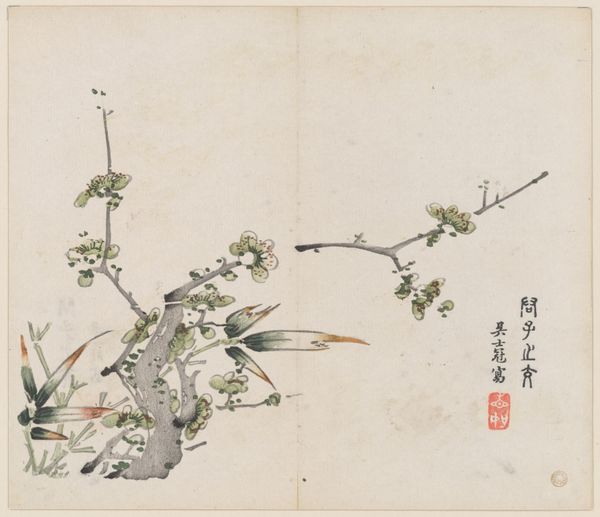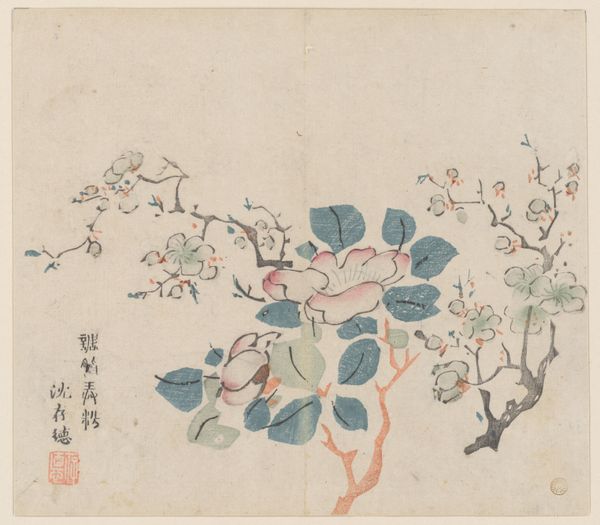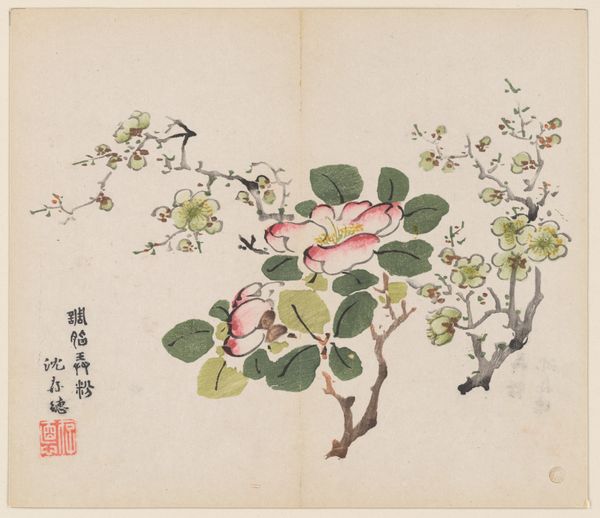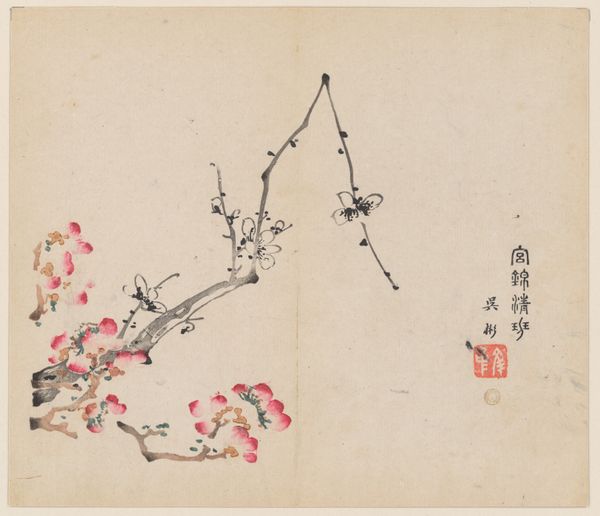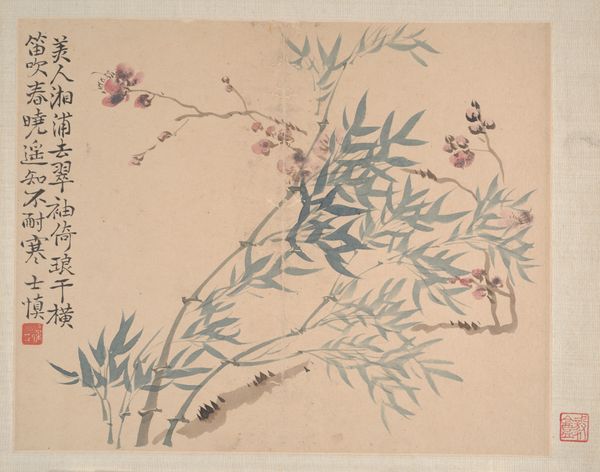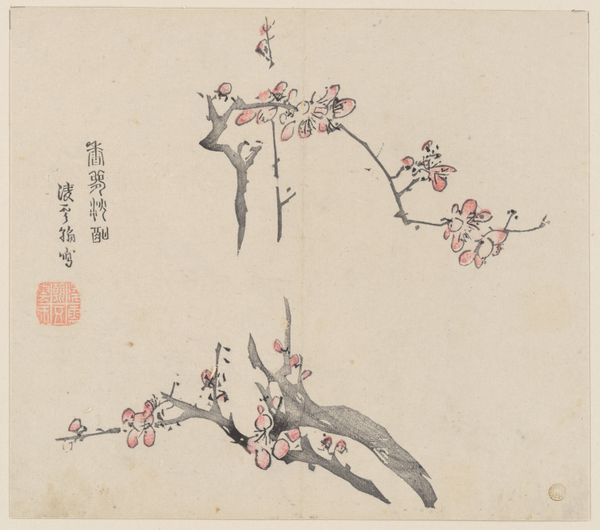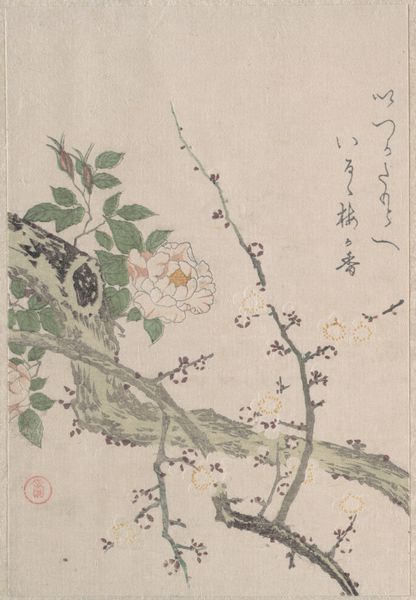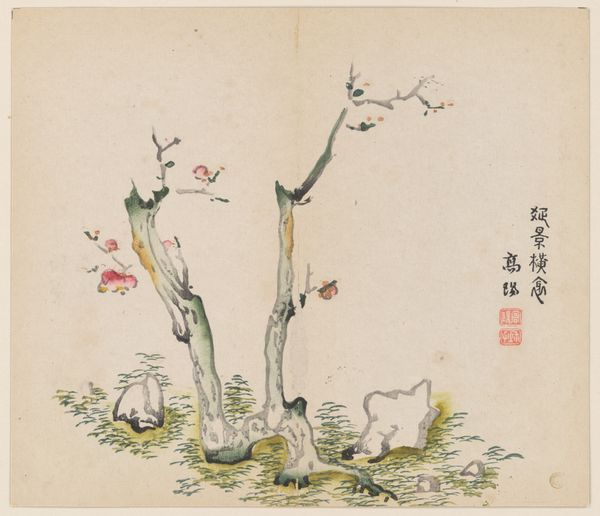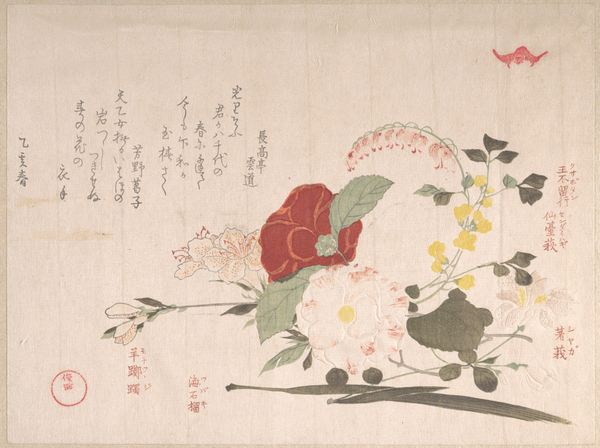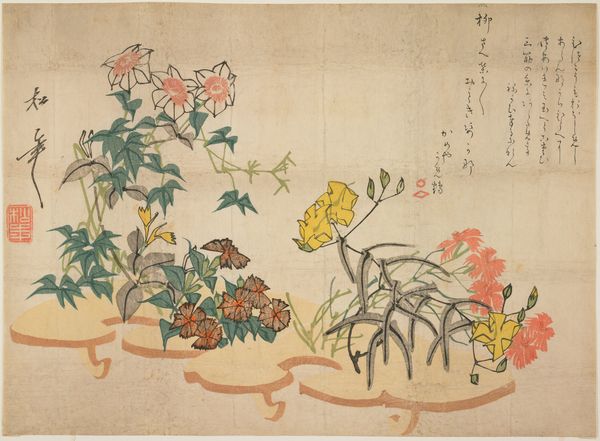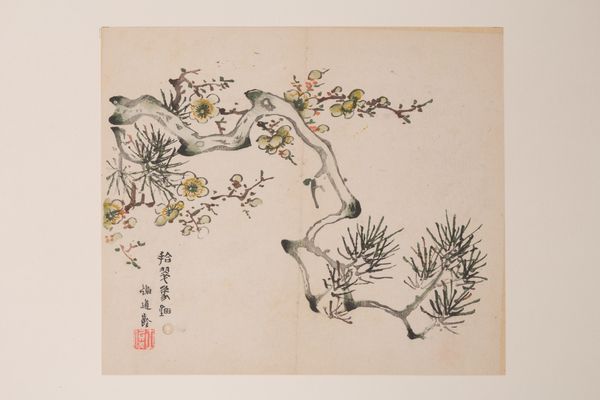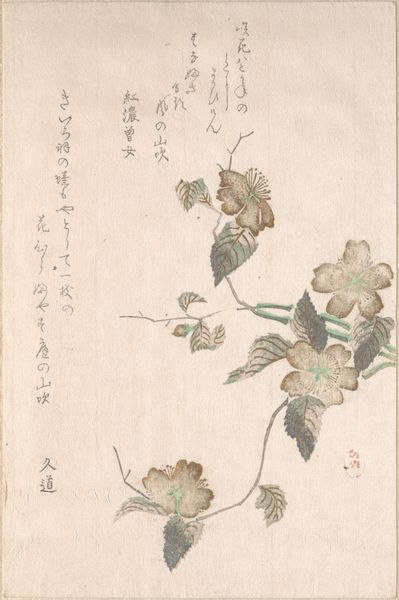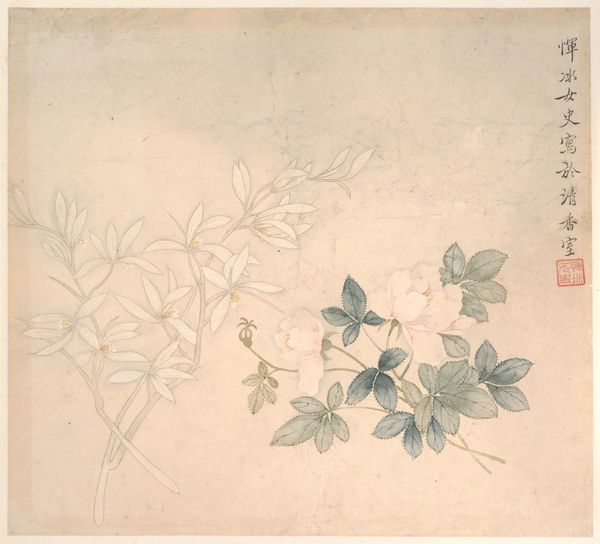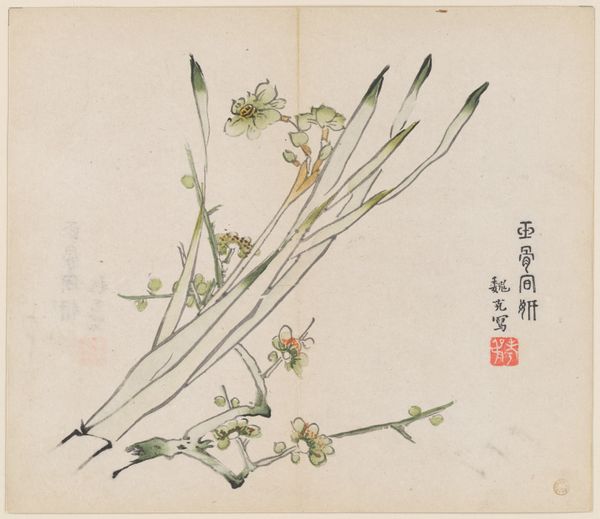
Page from the Ten Bamboo Studio Manual of Painting and Calligraphy 1633
0:00
0:00
drawing, print, paper, watercolor
#
drawing
#
water colours
# print
#
asian-art
#
paper
#
watercolor
#
calligraphy
Dimensions: 9 15/16 x 11 9/16 in. (25.2 x 29.4 cm)
Copyright: Public Domain
Curator: We’re looking at a page from the Ten Bamboo Studio Manual of Painting and Calligraphy, dating back to 1633. Hu Zhengyan is credited as the guiding hand behind this endeavor. It’s currently held in the collection of the Metropolitan Museum of Art. Editor: What strikes me immediately is its sense of quietude. The subdued palette, almost muted, creates a scene that feels both delicate and profound. It’s like a whisper on paper. Curator: Precisely. This work exemplifies the sophisticated printmaking techniques that Hu Zhengyan pioneered. Note how he layered colors, creating a depth rarely achieved in early printing. He sought to replicate the subtle gradations of watercolor painting. Editor: Thinking about its time and place, it also feels steeped in a particular kind of intellectual and social milieu. Manuals like this one were tools for transmitting and codifying knowledge and taste. Who was this knowledge for, and who had access to it? Curator: The manual aimed to democratize access to artistic techniques, targeting scholars and aspiring artists who might not have the resources for formal training. Its distribution still followed existing channels of privilege, of course. Editor: Looking closer at the imagery, I see chrysanthemums and what appear to be plum blossoms. What’s interesting is how these very traditional subjects can offer clues to elite worldviews and sociopolitical commentary, right? Curator: Undoubtedly. The plum blossom, for instance, symbolizes perseverance and renewal, especially valued by Confucian scholars during times of upheaval. The flowers are more than just flowers; they’re embodiments of virtue and resilience. The composition too directs our understanding. The juxtaposition, the asymmetry—it avoids a stagnant symbolism by keeping the viewer alert. Editor: This particular page, with its delicate rendering of flora, speaks volumes about the interconnectedness between the arts, scholarship, and societal values in 17th-century China. Curator: By analyzing the work’s formal aspects, its structure and color theory, we unlock an understanding of Hu Zhengyan’s innovative method for pictorial reproduction. Editor: And when viewed as a product of its time, this print offers rich insights into social and intellectual hierarchies and their impact on aesthetic expressions. Both aspects allow us a window into a past world.
Comments
No comments
Be the first to comment and join the conversation on the ultimate creative platform.
